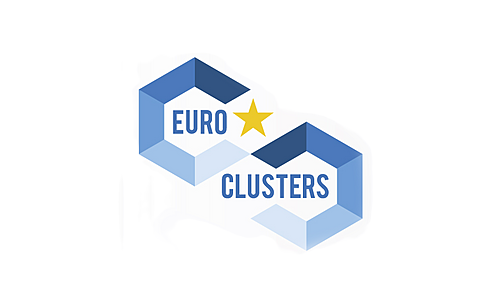No Cables. No Charger. A sensor powered just with light

How does it work?
Harvest Light
Advanced LAYER® OPV captures energy from indoor lighting and provide enough energy in typical office, classroom or industry indoor illumination.
Store Energy
Ultra-efficient power management chip (e-peas) coupled with latest storage element technology optimize recharge cycles and permits to reduce energy leak at its minimum.
Optimized firmware
Ultra-low power firmware architecture enables continuous tracks of air quality, temperature, and humidity permitting a 24/7 operation with just 8 hours of daily light exposure.
Advanced LAYER® OPV captures energy from indoor lighting and provide enough energy in typical office, classroom or industry indoor illumination.
Store Energy
Ultra-efficient power management chip (e-peas) coupled with latest storage element technology optimize recharge cycles and permits to reduce energy leak at its minimum.
Optimized firmware
Ultra-low power firmware architecture enables continuous tracks of air quality, temperature, and humidity permitting a 24/7 operation with just 8 hours of daily light exposure.
How does it communicate?
Visual display & Bluetooth® Low Energy
A visual display permits to consult the CO2 level on the sensor, but it is also communicating two additional indicators (humidity and temperature) in Bluetooth Low Energy.
Mobile App
A phone app permits to consult all the indicators. It is also possible to use your phone as a gateway and automotize actions, helping optimize ventilation, energy efficiency, and overall air quality.
Mobile App
A phone app permits to consult all the indicators. It is also possible to use your phone as a gateway and automotize actions, helping optimize ventilation, energy efficiency, and overall air quality.
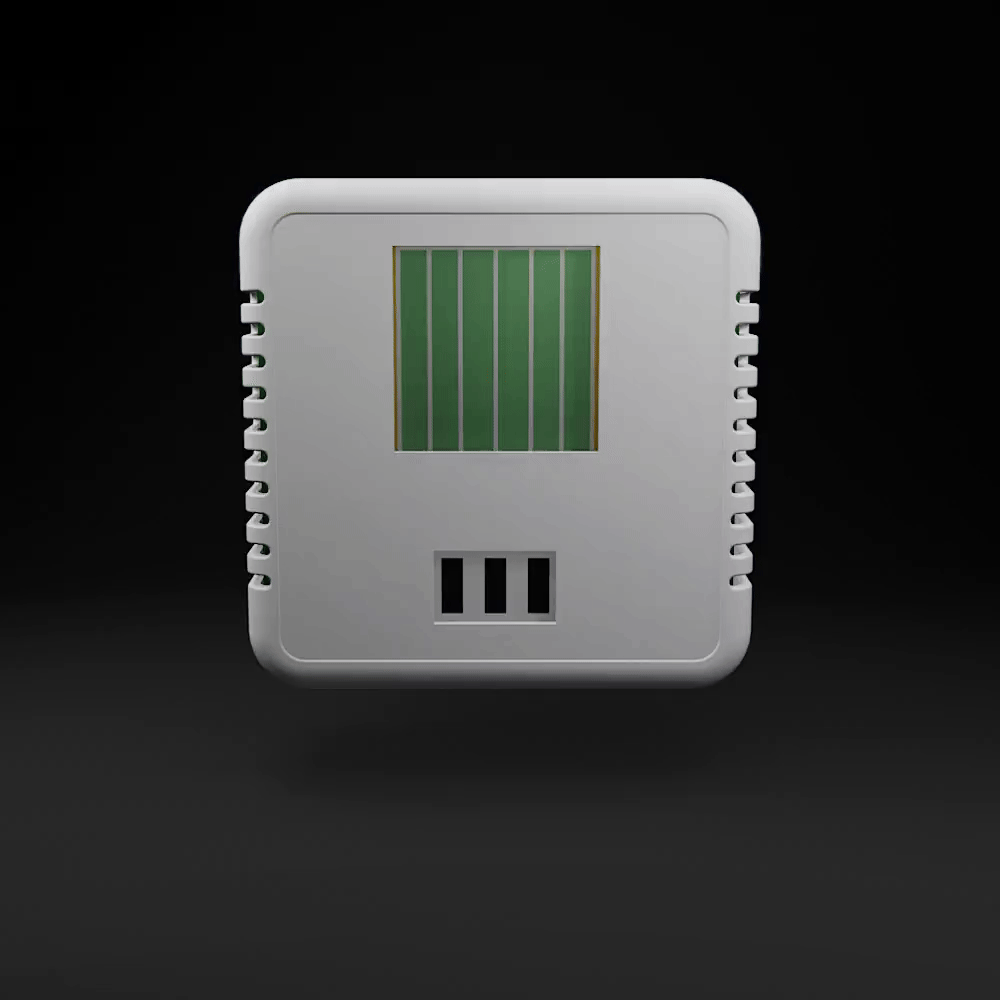
Importance of Indoor Air Quality

Cognitive performances
High CO2 levels reduce focus and decision-making abilities by up to 50%

Health Protection
Proper humidity prevents respiratory issues and limits pathogen spread
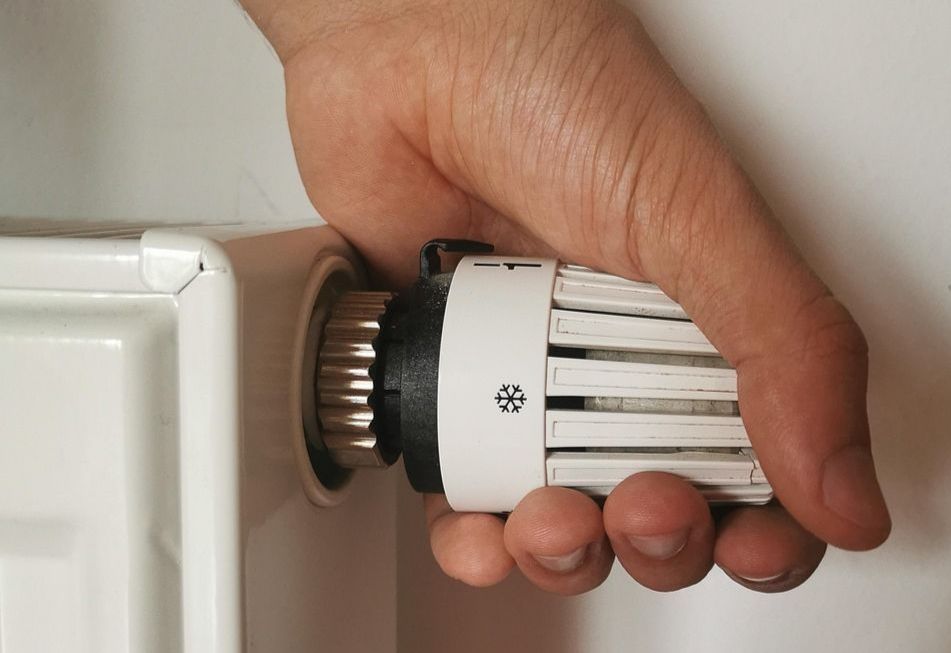
Energy Efficiency
Smart temperature monitoring can reduce HVAC costs by 15-30%
CO₂ levels exceeding 1000 ppm can impair cognitive performance by up to 15%, and above 1500 ppm, that drop can reach 50%.
Why an autonomous device?

Environmental impact
Disposable battery-powered sensors consuming excessive energy leads to frequent battery changes and pollution
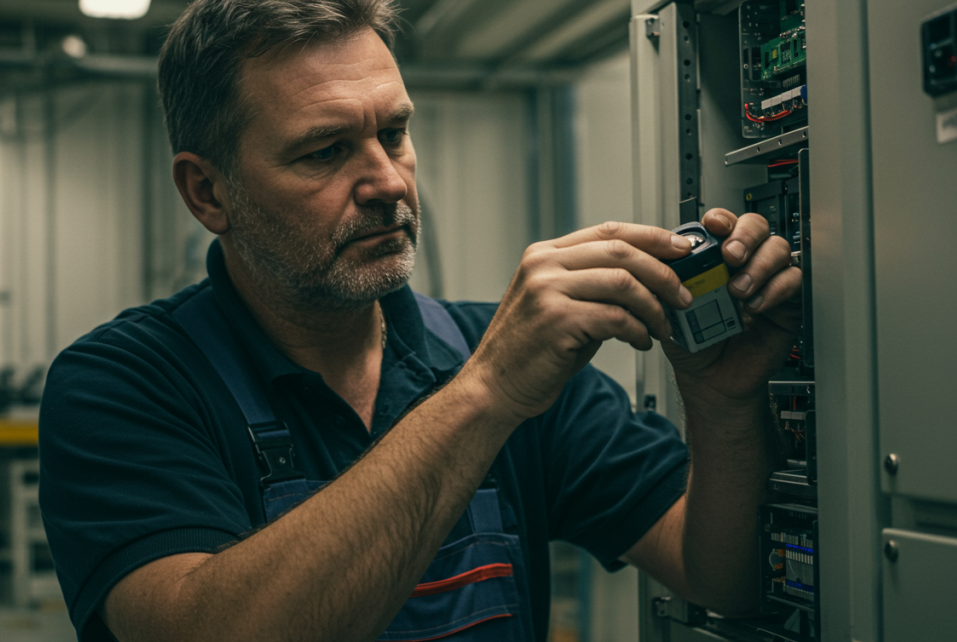
Management cost
A consequence of frequent battery changes is an increase of Total Cost of Ownership (battery and replacement cost)
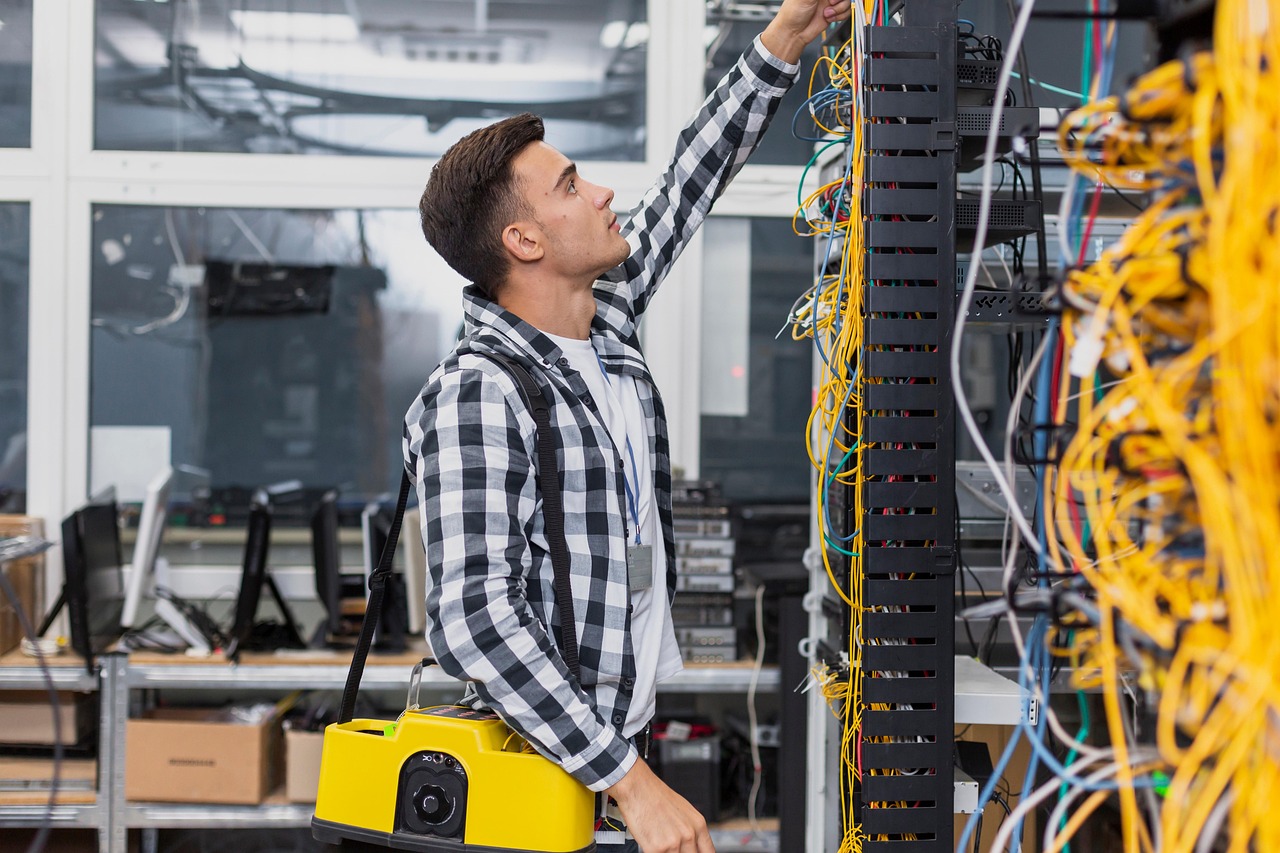
Cabling expenses
Deploying wired sensor generate high cabling cost to energize the sensor or to collect the data (Access point PoE)
Full battery degradation can take over 7,000 years and contaminants like mercury affect soil and water for decades.
Applications
Office Building
Optimize comfort and energy usage throughout commercial spaces. Gain insight into utilization patterns while demonstrating commitment to sustainability goals.
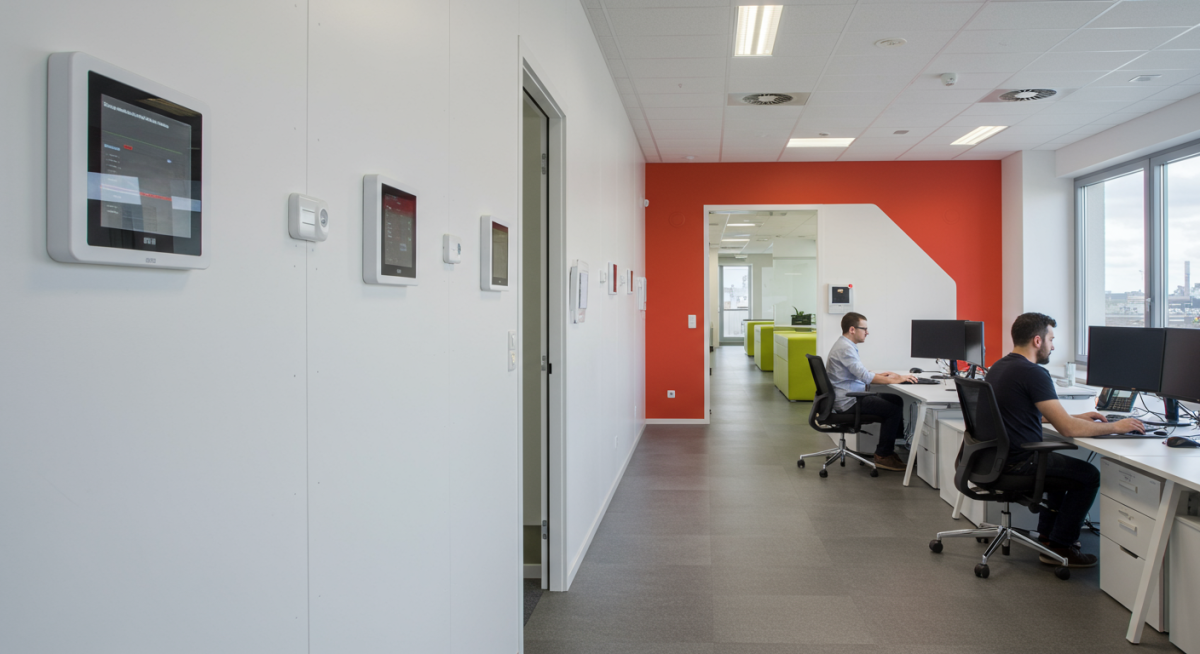
Warehouse & Logistic
Ensure optimal conditions for inventory while reducing the maintenance burden of monitoring large facilities. Track temperature and humidity in critical areas 24/7.

Home & Apartment
Improve indoor air quality and comfort without the hassle of changing batteries. Perfect for rental properties and multi-family buildings with limited maintenance access.

Use case: Air quality monitoring in schools
In a majority of classrooms, air quality goes unmonitored, even if tracking CO₂, humidity, and temperature can lead to cleaner air, better comfort, and improved concentration.
Why? Most of the time because of high cabling costs, limited access to power outlets or complex solutions.
With our autonomous sensor, schools can access smarter and simpler solution to ensure a healthy learning environment.
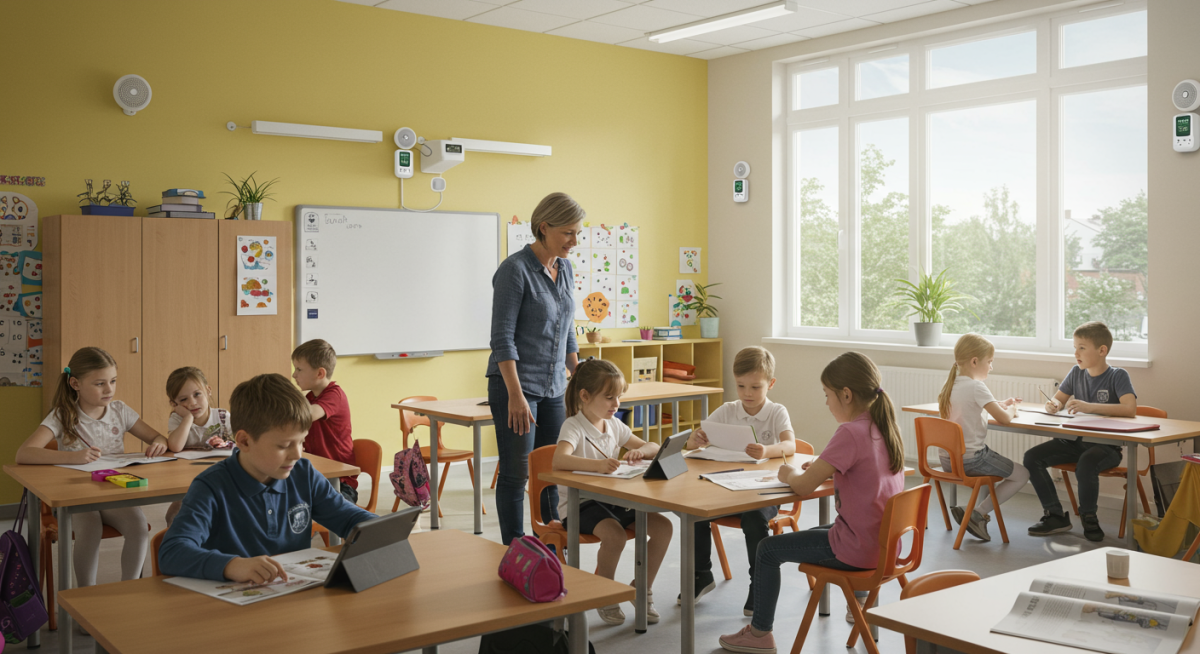
Actors behind the technology
BLINQY is a Belgian-based engineering firm delivering ultra-low power software solutions in Internet of Things (IoT).
BLINQY specializes in wireless trackers, sensors and mobile app development.

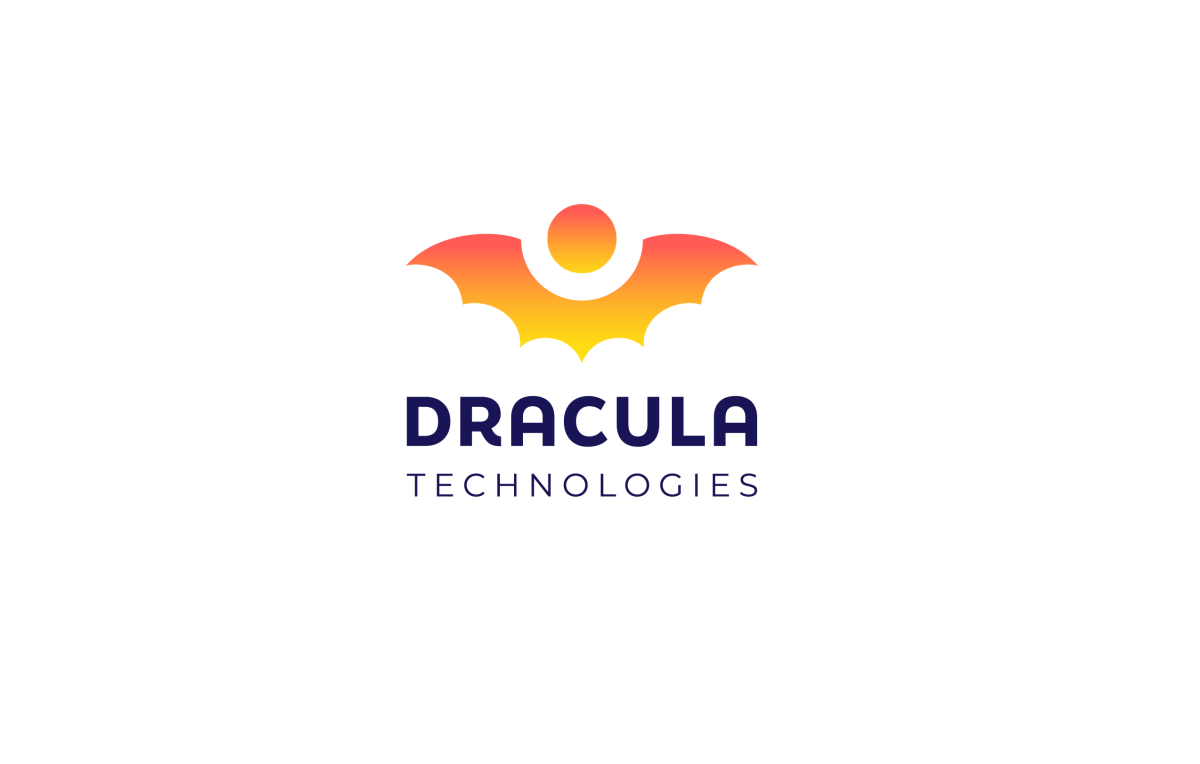
Dracula Technologies is a French company reinventing light energy harvesting through organic photovoltaic modules. Their product LAYER®, harvests indoor light to power low-energy electronic devices, eliminating the need for disposable batteries.
Start monitoring Air Quality with no battery change

Sources
https://www.hsph.harvard.edu/healthybuildings/2021/09/09/impacts-of-indoor-air-quality-on-cognitive-function/
This project has received funding from the European Union’s Single Market Programme under grant agreement n.101074549.

